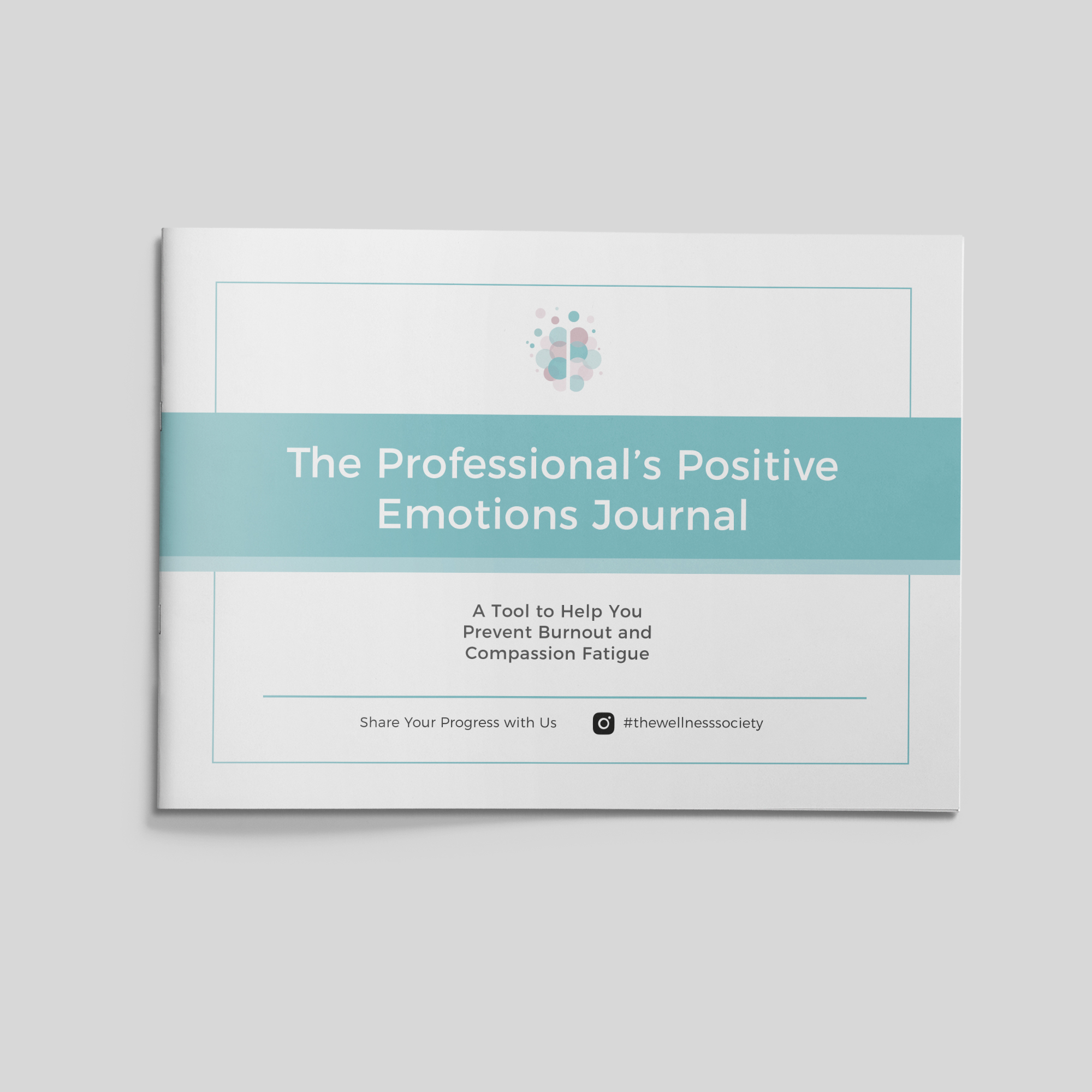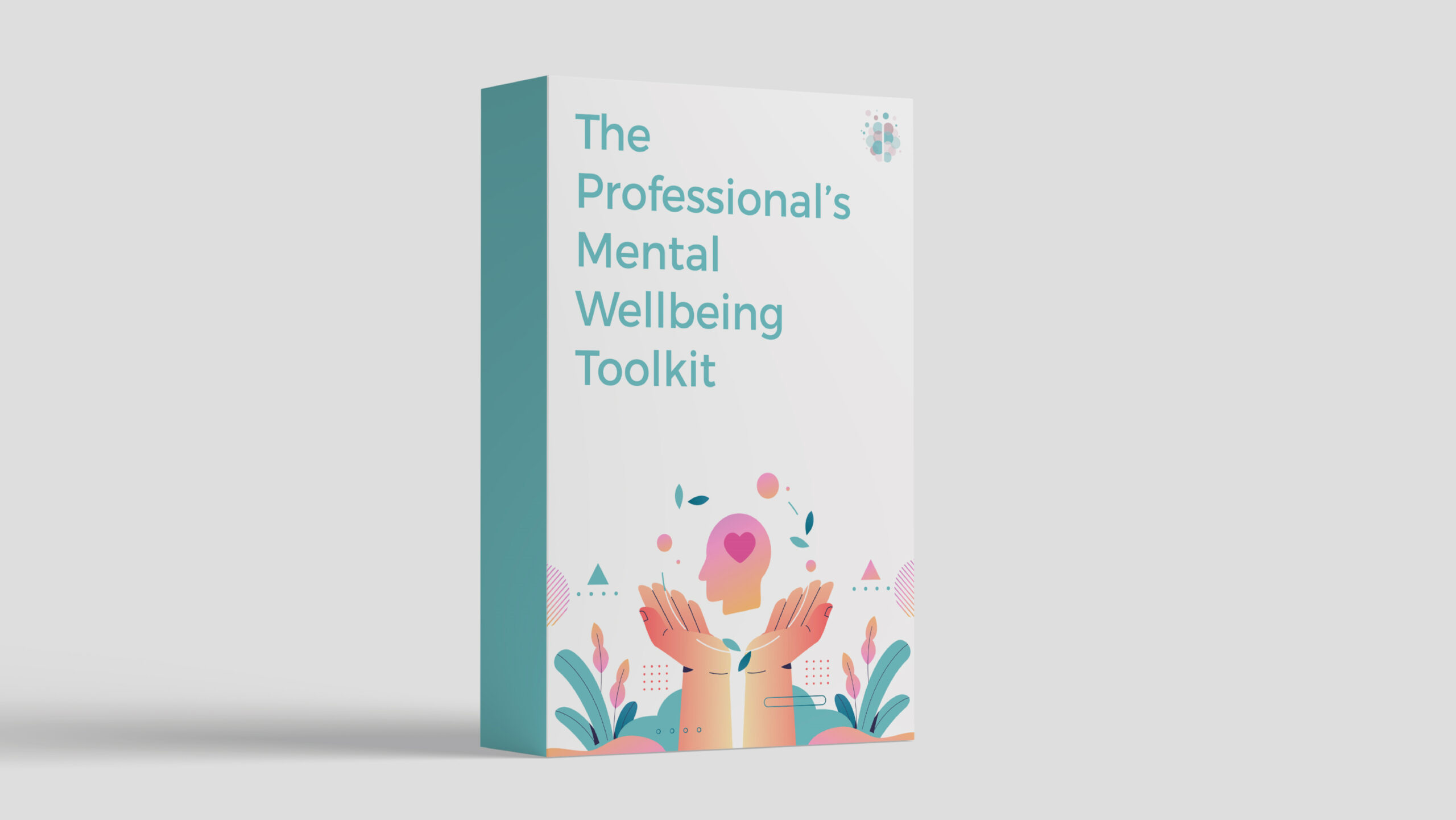In 2022, the the American Psychological Association (APA) found that 45% of licensed psychologists reported feeling burned out.
At the same time, the World Health Organization (WHO) reported a 25% post-pandemic increase in anxiety and depression worldwide. Loneliness, coronavirus anxiety, relationship breakdowns, grief, bereavement, and financial worries have all contributed to a collective mental health burden in society.
It’s understandable that a significant number of therapists, particularly younger ones, have been struggling to cope.
What Is Burnout?
WHO defines burnout as an occupational phenomenon “conceptualized as resulting from chronic workplace stress that has not been successfully managed.”
Burnout is typically categorized by three dimensions as defined by Maslach (1982):
- Sustained feelings of emotional exhaustion (loss of energy, depletion, overextension, fatigue)
- Depersonalization (withdrawal, increased mental distance from one’s job, feelings of cynicism related to one’s job)
- Professional inefficiency (reduced feelings of accomplishment or productivity)
Common Signs of Therapist Burnout
Common signs of burnout include:
- Emotional exhaustion
- Reduced empathy
- Irritability
- Memory impairment
- Feeling like you never have enough energy, waking up tired, and getting poor sleep
- A decreased sense of accomplishment
- Feelings of helplessness, hopelessness, and worthlessness
- Physical symptoms or increase in illnesses
Assessment
To self-assess whether you might be at risk of burnout, complete the Maslach Burnout Inventory (MBI).
Compassion Fatigue vs Burnout
Compassion fatigue and burnout both involve emotional exhaustion, fatigue and disengagement. The key difference is that compassion fatigue is specifically tied to empathetic strain from witnessing other’s suffering, whereas burnout is a broader phenomenon related to chronic work-related stress.
Depression vs Burnout
Recent research shows a significant overlap between burnout and depression, suggesting shared underlying causes, such as chronic stress, and similar symptoms.
However, burnout and depression have distinct factors that contribute to their development, so they're understood as separate conditions.
A recent study of critical care professionals supports this. It revealed a moderate overlap between depression and burnout. Interestingly, the study noted a stronger relationship between burnout and post-traumatic stress disorder (PTSD) and anxiety than with depression.
These challenges in clearly categorizing and distinguishing between different mental health conditions support the transdiagnostic model of mental health which we operate from.
Causes of Therapist Burnout
Understandably, constant exposure to clients' suffering, trauma, and emotional distress can take a toll on therapists, leading to emotional exhaustion.
Research shows that age and lack of experience are common personal risk factors for burnout. As you gain experience as a therapist, you learn how to conserve your emotional energy.
Other common cited causes of burnout include:
- Chronic stress
- High-pressure work environments
- Heavy caseloads
- Comparatively low salaries
A review by Simionato and Simpson (2018) found these personality factors are associated with stress and burnout:
- Neuroticism
- Rigid thinking style
- Excessive conscientiousness
- Perfectionism
- Overinvolvement in client problems
At the systemic level, it can be argued that burnout is caused by an inherent and pervasive problem in workplace culture. Most workplaces operate from a white supremacist framework, which values (Jones and Okun, 2001):
- More, bigger, better – at the expense of quality
- Power hoarding – at the expense of the workers
- Sense of urgency – at the expense of flexibility
- Individualism – at the expense of community
- Perfectionism – at the expense of creativity and inclusion
9 Strategies for Preventing Therapist Burnout
1. Cultivate Self-Awareness
“Listen to your body when it whispers, and you won’t have to hear it scream.” - Anon
By cultivating self-awareness, you'll recognize your early signs of burnout. This heightened awareness allows you to take proactive steps to prioritize your wellbeing before burnout becomes severe.
You could try:
- Body scan meditation. Developing a regular body scan meditation practice can help you tune into physical signs of stress that indicate early stages of burnout.
- Regular journaling. This allows you to track patterns, identify triggers, and explore underlying emotions related to burnout.
- Mood trackers. Like journaling, this can reveal patterns and triggers that contribute to stress and burnout.
2. Have a Full Life Outside of Work
Does work feel all-consuming? How could you take steps to improve your work-life balance?
Imagine yourself as a pie chart.
Now, imagine your job as a therapist as a portion of that pie chart with the rest of your pie having different sections.
You could have a friends and family slice, a hobby slice, and so on. The purpose of this illustration is to acknowledge that career is only part of a person (an important and potentially meaningful part, but still a part at that).
Sometimes having a work-life-balance can mean filling the life section more to provide that balance.
Some ways people fill their life outside of work include:
- Hobbies. Explore different activities until you discover what sparks joy for you. What have you always wanted to try but haven't had the chance to yet? What helps you relax? What did you enjoy doing as a child or teenager?
- Investing in your relationships. Having family dinners, going to trivia/game nights with friends, etc.
- Volunteering/charity. Giving time to a cause you’re passionate about, fundraisers, giving time to supporting those in need, etc.
- Ecotherapy. Taking short walks or some time to be in awe of nature. Check out our free Ecotherapy Workbook for more inspiration.
You may find the Wheel of Life Coaching Tool helpful for improving your work-life balance.
3. Focus on Your Why and Personal Values
“It hurt because it mattered.” – John Green
Research shows that stress is strongly associated with finding life meaningful – it’s an inevitable part of pursuing personal goals and caring about things important to us. So, we need to embrace work-related stress as a natural part of our work.
Seeing the meaning in stress can shift you into a more positive and self-compassionate mindset.
It’s worth reflecting on which personal values drove you to become a therapist:
- Altruism?
- Compassion?
- Connection?
- Social justice?
- Curiosity?
Connecting with your values can boost your resilience, reminding you of why you entered this field in the first place. Here’s a free tool for this:
4. Actively Combat Cynicism
“Look for the light in dark places. A smile amidst the tears, a moment of laughter, the baby steps of progress made.” – Brittany Ellmer
Cynicism and reduced feelings of accomplishment are key elements of burnout.
You can therefore help prevent burnout by directly addressing your cynicism. Our Professional’s Positive Emotions Journal is designed specifically for this purpose. Journal prompts include:
- A small way I made a difference was…
- A client who made a small step was…
- I’m proud of myself for holding the space for…
Feel your cynicism increasing? Why not develop a weekly journaling habit using this tool?
5. See Rest as Productive
A sign of burnout can often be physical exhaustion or even physical illness, meaning your body is imploring you on its need for rest.
You may wish to start prioritizing sleep more. Some ways to do this include:
- Adopting a regular sleep schedule
- Limiting electronics before bed (that includes disengaging from social media scrolling or hitting pause before that next episode plays)
- Limiting caffeine after 2pm
- Exercising during the day to burn stress hormones
- Making sure your sleeping area is a place of rest (dark space, limiting excessive lights/noise, having white noise if needed, etc.)
- Adopting a calming bedtime routine
Taking time off and scheduling regular breaks are also essential practices for maintaining overall wellbeing and preventing burnout.
It's common to experience feelings of guilt or anxiety when resting, but managing these emotions with self-compassion is key. Remind yourself that self-care is not selfish and that prioritizing rest ultimately enhances your ability to perform effectively in the long run.
By incorporating rest into your routine and practicing self-compassion, you cultivate a healthier work-life balance and sustain your productivity in the long term.
Need to shift your mindset around rest? Check out this article with a list of quotes reminding you of the importance of slowing down.
6. Optimise Your Mindset
As mentioned, burnout is associated with overinvolvement in client problems, a rigid thinking style, and perfectionism.
Therapists need to set boundaries with how much they can care, focusing on clients only during working hours. This has been referred to as “compassionate boundaries”, and it’s a skill that grows with experience. If you find yourself worrying a lot about clients outside of work, why not try The Worry Time Technique?
Preventing burnout involves letting go of an overdeveloped sense of responsibility and avoiding becoming overly involved in your clients' problems. Remember that it's essential to prioritize your own wellbeing to effectively support others.
It’s important to evaluate your workplace environment, which we’ll explore soon. But it’s also worth considering if you might hold rigid beliefs regarding the fallacy of fairness, which can lead to feelings of frustration and disillusionment.
Understand that life and work are not always fair. Instead of dwelling on deeply ingrained systemic injustices, focus on problem-solving and resilience-building. Focus on what you can control, for your own wellbeing.
Also, be mindful of setting realistic expectations for yourself and your clients. Remember, slow progress is still progress.
You may wish to explore incorporating principles of radical acceptance from dialectical behaviour therapy (DBT) into your self-care practices. This concept encourages you to accept the inherent uncertainties, challenges, and imperfections of life and work, rather than futilely struggling against them.
7. Develop a Self-Care System
Any activity you do that nurtures your mental or physical wellbeing can be thought of as “self-care”.
As a therapist, you absolutely need to develop a self-care system to maintain resilience in this emotionally challenging field. Beyond rest, what does self-care look like for you? What nourishes your mind and body?
Here are some ideas for how to incorporate self-care into a busy lifestyle:
- Brief relaxation exercises. Integrate mindfulness meditation or breathing exercises into your daily routine – even just a few minutes a day can help reduce stress. Could you do it when you’re brushing your teeth or cleaning the dishes?
- Quick and healthy meals. Taking some time to research quick and healthy (also freezable) meal options can be a game-changer for supporting your mental wellbeing in the long run.
- Joint hobbies. Busy family life? How could you involve your kids in activities that spark joy for you?
- Quick nature breaks. Could you go for a quick walk in the park during your lunch break or after work? Connecting with nature may help you feel better.
8. Optimise Your Work Setting
Identify Your Ideal Clientele
Think about the type of people you really connect with and enjoy helping. Working with your ideal clients can boost your job satisfaction and help prevent burnout. If you’re a young therapist, it’s important to try to get a wide range of experiences so you can better understand this better.
For instance, if you're feeling drained by working with kids, maybe shift your focus to adults. Or if you're finding it tough to connect with people struggling with addiction, consider specializing in trauma therapy instead. It's all about finding your niche and where you feel most comfortable and fulfilled.
Explore New Modalities
Ever considered trying out different therapy styles or techniques?
Exploring new modalities can give you a fresh perspective and reignite your passion for what you do.
Reduce Your Caseload
Aim for a caseload that lets you give your all without feeling like you're drowning. This way, you'll have plenty of time to take care of yourself and keep growing professionally.
Balance Your Caseload With High-Functioning Clients
Consider seeking opportunities to work with high-functioning clients who may present less complex or emotionally taxing issues. Doing so can help lighten the emotional load that comes with being a therapist.
Find Adequate Supervision
Make sure you’re getting adequate supervision and support, both within your current workplace and externally if necessary. Supervision gives you an opportunity to process challenging cases, receive feedback, and enhance your clinical skills.
Evaluate Your Workplace Environment
Look for any red flags in your workplace that might be adding to your stress levels. If you're dealing with some serious systemic issues that are taking a toll on your wellbeing, it might be worth seeking opportunities elsewhere.
Consider Private Practice
Ever thought about going solo? Transitioning to private practice might give you more autonomy, flexibility and control over your workload and client population. Sure, it comes with its own challenges, but it can also be a less stressful work environment and a better fit for your preferences and needs.
Explore A Portfolio Career
Diversify your career by exploring multiple income streams. This might include a combination of private practice, consulting, teaching, or other related roles, allowing you to pursue varied interests and mitigate burnout risk.
Check out this Facebook group for more information: Additional Streams of Income for Therapists.
9. Take Your Own Counsel
If some of these strategies sound familiar, it’s most likely because it echoes the guidance that a therapist would give to a client.
To be blunt, you need to take your own counsel in regards to wellbeing and self-care.
The gentle nudging to engage in healthy practices like getting outside in nature or having something that sparks joy are also things you should be nudging yourself to do.
Imagine your case as a client’s case. How would you approach it? Journal about this.
Summary
Feeling burned out as a therapist is very common. It’s important to become familiar with your personal signs of burnout and to discover the forms of burnout prevention that work for you.
In this article, we covered:
- Cultivating self-awareness
- Having a full life outside of work
- Focusing on your why and personal values
- Actively combatting cynicism
- Seeing rest as productive
- Optimising your mindset
- Developing a self-care system
- Optimising your work setting
- Taking your own counsel
If burnout persists, you may wish to explore alternative career options within or outside the field of therapy. Consider transferring your skills and expertise to related fields such as HR, coaching, or consulting, where you may find new opportunities for growth and fulfilment.
Here’s a flowchart with some popular alternative career suggestions.
We hope you found this article helpful.
A Toolkit to Nurture Both You and Your Client's Wellbeing
"This toolkit has been a very unique, transformational resource since it has allowed me to remember the importance of taking care of myself as a mental health provider while at the same time being able to support my clients more proactively on their own unique journeys.”
Co-Authors

About Rebecca
Rebecca is the founder of The Wellness Society and author of two fluff-free books, The Framework and Understanding and Healing Trauma. She's passionate about creating concise and compassionate mental health and wellbeing tools that address the root causes of distress. Read more about her views on our About page.
About Alyssa
Alyssa is a licensed mental health counselor and registered art therapist.
Alyssa has worked with a variety of clients in outpatient mental health settings in addition to working most recently with juveniles through Yale University’s Juvenile Justice Program.





